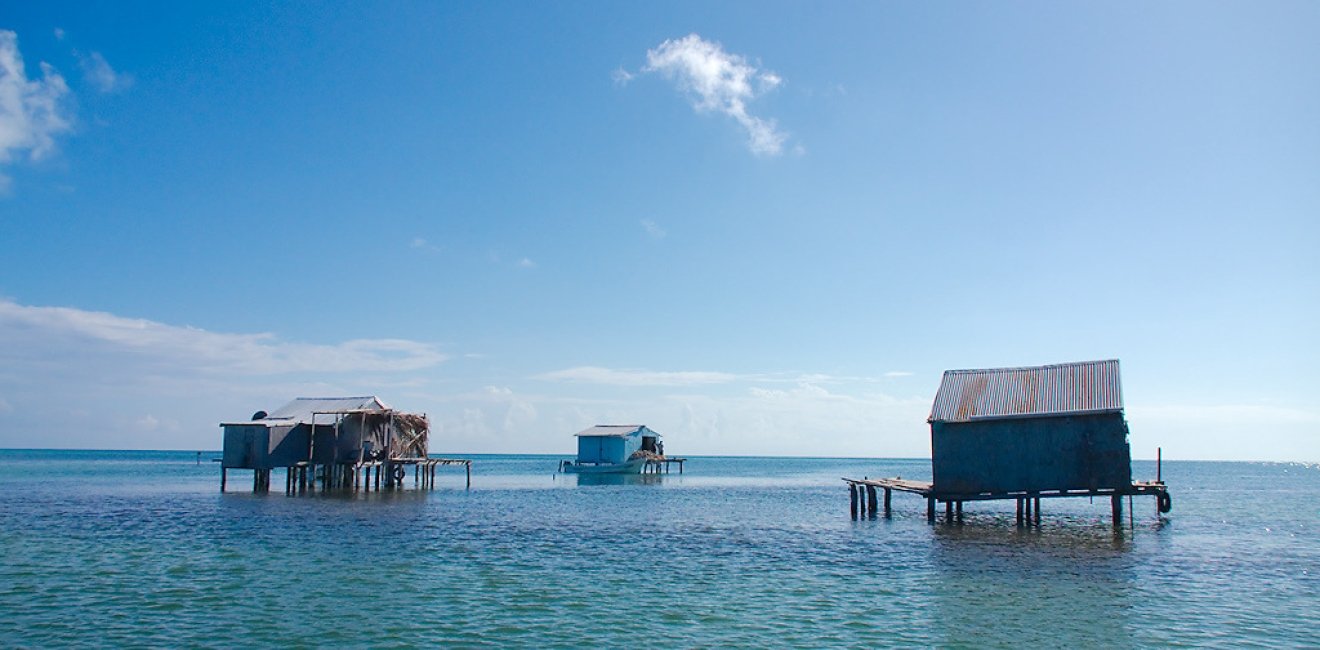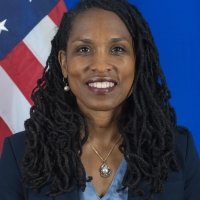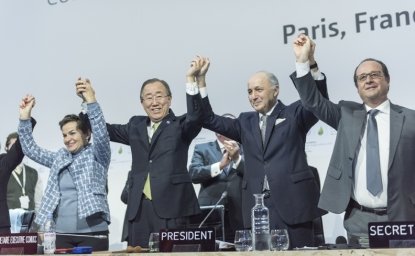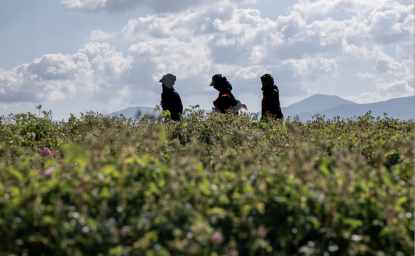“I’m an island boy”
—President Barack Obama
Islands predominated in the Paris COP negotiations.[1] From metaphor to moral compass to declarations of kinship—like President Obama’s— the small island developing states’ vulnerability, dignity, and ambitions served as a rudder. Among other significant provisions discussed below, the response of the Agreement and the decision text—the latter a supporting though not legally binding document—and to demands for capacity building and efficient, simplified procedures for accessing financial resources directly addressed small islands’ concerns. And so the closing movements of the meetings offered congratulatory and hortatory words from island representatives, including a spontaneous, harmonized chorus of Bob Marley’s Three Little Birds stressing the refrain, “Every little thing is gonna be alright."[2]
Small island states representatives are, however, clear-eyed about the potential of the Paris Agreement and understand that it is but a foothold in a much, much steeper journey. In Paris they were represented primarily by the Alliance of Small Island States (AOSIS) negotiating bloc, a coalition of small island and low-lying coastal countries that share similar development challenges and concerns about the environment, especially their vulnerability to the adverse effects of global climate change. AOSIS, with 44 members and observers from all regions of the world, works as a negotiating voice for small island developing states (SIDS).
The small islands representatives demanded a number of elements, including a long-term temperature goal of “well below 1.5 degrees” Celsius above pre-industrial levels, an indicative pathway to achieve it, an international mechanism on Loss and Damage due to climate-related events, and scaled-up, reliable financial resources above the $100 billion per year by 2020 already promised by developed countries to developing nations, particularly the most vulnerable.[3]
1.5˚C to stay alive
Beginning with the 2009 COP15 meetings in Copenhagen, SIDS and particularly the atoll nations noted the existential threat of a 2˚C ceiling on temperature rise. The calls for 1.5 to stay alive were, however, largely relegated to the tense hallways of Copenhagen’s Bella Center six years ago. The 2015 final decision text and Paris Agreement, in contrast, emphasize the urgent need to hold increased global average temperature to “well below 2˚ C above pre-industrial levels” and to pursue efforts to limit the temperature increase to 1.5˚ C.
This is palpable progress, meeting in part a demand of island states, but is not supported by the remainder of the text. While the Agreement calls for global peaking of emissions “as soon as possible,” it does not require complete decarbonization of global economies, opting instead for a balance between anthropogenic emissions by sources and removals by sinks. The absence of the decarbonization mandate makes the 1.5˚ C goal almost entirely illusory. Settling on and supporting a1.5˚C ceiling will be a critical next step in future decision-making.
Scaled-up, new, and additional funding
SIDS demanded a number of assurances regarding finance in the Paris Agreement. Among them were the continued availability of funds—particularly for adaptation— and the progressive increase in those funds over time, consistent with need.
At present, the vast majority of climate finance disbursed addresses mitigation, or emissions reduction, rather than adaptation, which increases resilience to climate impacts and is particularly relevant to small island developing states. Further, all existing funds to support climate finance are woefully undercapitalized when compared to what is needed for decarbonization and adaptation. Estimates for investments necessary to keep average global temperatures below the 2˚ C increase range consistently hover close to the $1 trillion mark.[4] The international community has set a goal of disbursing $100 billion per year or mitigation and adaptation together by 2020, but estimates for climate change adaptation, not necessarily including climate-induced migration and loss and damage, significantly exceed that aspirational goal.[5]
The Paris Agreement attempts to address this and other SIDS concerns. The decision text requests and the Agreement aims for expedited support of national adaption plans for least developed countries, many of which are SIDS, and enhanced coordination and delivery of resources to support “country-driven strategies” via simplified and efficient procedures for disbursing financing. The Agreement notes that scaled-up financial resources should also aim to balance adaptation and mitigation, again taking into account country-driven strategies and the priorities of the most vulnerable and resource-constrained, including many SIDS. If operationalized, this language provides a significant springboard for meaningful and better funded adaptation efforts.
As for the U.S. commitment, days before the close of the negotiations, Secretary of State John Kerry agreed to $800 million dollars in grants-based aid from the United States for the world’s poorest to adapt to extreme weather. This would be in addition to the $3 billion over four years that the United States has pledged toward the international community’s $100 billion dollar annual flow described above. Kerry also acknowledged that, in the decades to come, trillions will be needed adequately to address the globe’s adaptation and mitigation needs.
These statements are only promises to give and are subject in the years ahead to politicking at home and to stable support from the White House. As was widely reported the proposed substitution of “shall” for “should” to describe detailed financial obligations in a part of the draft nearly upended the agreement, with Secretary Kerry warning, “We cannot do this,”[6] and was abandoned. Sober political realities require us to understand that a funding pledge is simply a pledge requiring further action.
Loss, damage, and liability
Small island states insisted that the text include a stand-alone section on loss and damage, maintaining that vulnerable communities are already experiencing impacts to which it is impossible to adapt. (For further discussion, see essay by Saleemul Huq). Article 8 on loss and damage does stand alone, rather than being nested within Article 7 on adaptation and, consequently, is limited to persistently undercapitalized adaptation funding streams. Further, loss and damage related measures on risk insurance initiatives received accolades and early indications of support.[7]
The provision, however, was significantly restricted by the decision text, which excludes compensation or rehabilitation—an imperative for many developed country negotiators, particularly the United States—stating glaringly that Article 8 of the Agreement “does not involve or provide any basis for any liability or compensation.” This definitive language was included to assuage the concerns of major polluters.
Although the decision text precludes liability claims under the Paris Agreement, it is not clear that parties have given up rights to compensation under recognized international law norms—such as polluter pays and no harm principles—and related agreements. On the other hand, the very existence of nationally determined contributions and a formal loss and damage mechanism—one now explicitly excluding the possibility of compensation—may preclude future claims under extant international law.[8] This will no doubt be a point of contestation ruminated on in venues ranging from law journals to future negotiating halls.
Urgency and grace—island style
Islanders not only inspired the content of negotiation at Paris, but also its style and approach. The High Ambition Coalition—quietly conceived months before Paris by Tony de Brum, foreign minister of the Marshall Islands, and emerging with force in the closing days of the meetings—embodied the way in which a small swell can advance to become a sweeping wave. It began as a coalition of roughly 15 countries and emerged as group of over 100, including the European Union, the United States, and African, Pacific, and Caribbean countries. This diverse group was committed to a “truly ambitious” agreement. Through its efforts terms such “1.5˚ C” and “loss and damage” emerged from the margins to formal recognition.
The Paris Agreement marks just the beginning of a gargantuan effort. AOSIS’s closing statement noted that this was an historic agreement, but that future generations will judge it based on what is done moving forward.
Maxine Burkett is an associate professor of law at the William S. Richardson School of Law at the University of Hawaiʻi.
The opinions expressed here are solely those of the author.
[1] COP here stands for Conference of the Parties of the United Nations Framework Convention on Climate Change, the formal name of the Paris climate conference.
[2] Amanda Little, “What the Paris Climate Agreement Means for Vulnerable Nations,” The New Yorker, December 15, 2015.
[3] Agreements like the Suva Declaration on Climate change outline these calls for an ambitious and legally binding agreement that advances prinicpal loss and damage and finance concerns of small island states. See Suva Declarion on Climate Change, Pacific Islands Development Forum Third Annual Summit, 2-4 September 2015.
[4] See Maxine Burkett, “Lessons from Contemporary Resettlement in the South Pacific,” Columbia Journal of International Affairs 68, no. 2 (Spring 2015): 75-91.
[5] See e.g., Liane Schalatek et al.,“The Green Climate Fund,” Climate Funds Update (December 2014), 6.
[6] See Joby Warrick, “How one word nearly killed the climate deal,” Washington Post, December 13, 2015.
[7] See Lisa Friedman, “Obama defends climate diplomacy, backs aid for islands,” Greenwire, December 1, 2015.
[8] See e.g., Tim Crosland, “Vulnerable countries warned: Protect your legal rights in a Paris Accord,” http://www.climatechangenews.com/2015/10/23/vulnerable-countries-warned-protect-your-legal-rights-in-a-paris-accord/
Image Source: Life on the water, Banco Chinchorro (CC BY-SA 2.0)





